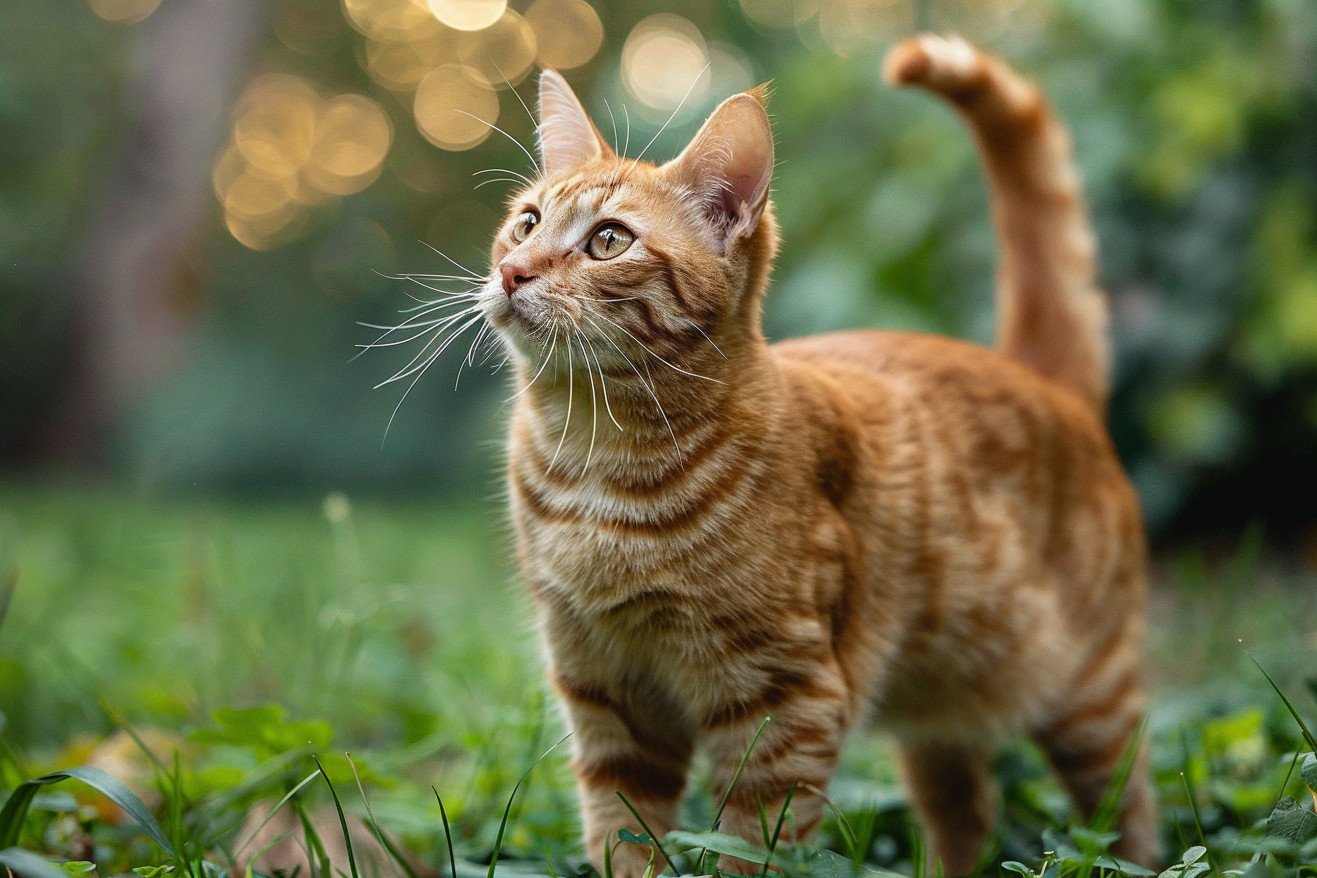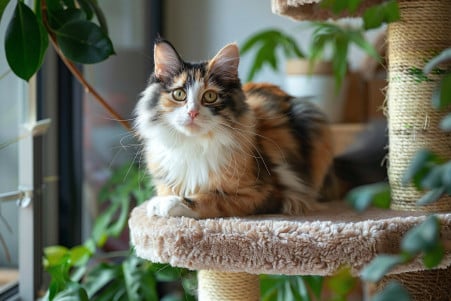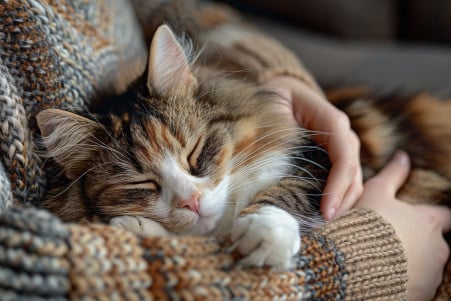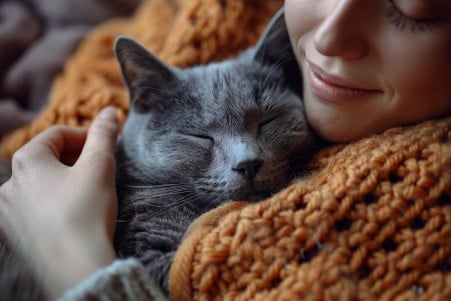Male Cat Heat Cycles: Signs, Behavior, and Understanding Fertility
28 March 2024 • Updated 27 March 2024

When do male cats go into heat and how can you recognize the signs, since male cat behavior and fertility cycles differ from that of female cats? Unlike females, male cats don't go into heat or have regular fertile cycles. However, intact (non-neutered) male cats experience an increase in testosterone and reproductive behaviors when days get longer in spring and summer.
Cats aren't dreaming of electric mice—cats' reproductive instincts are real and biologically based. We'll look at veterinary and animal behavior studies that explain male cats' reproductive cycles. This information will help you understand your cat's experience more fully, so you can be there for them and make more informed choices about whether to neuter them.
Do male cats show mating behaviors when female cats are in heat?
How to Tell If Your Cat Is Sexually Mature
According to Catster, male cats reach sexual maturity between the ages of 4 and 6 months. One of the first signs of sexual maturity is the testicles dropping and growing larger. At this time, the cat's urine also starts to smell more pungent due to the presence of felinine, a sulfur compound that is produced when the cat is exposed to testosterone.
In addition to the physical changes, male cats will start to exhibit mating behaviors before a female in heat is even present. One of the most common mating behaviors is territorial marking, which is often done by spraying urine. This behavior is the cat's way of marking his territory and attracting a mate. Other behaviors that indicate a cat is reaching sexual maturity include loud yowling vocalizations and an increase in aggression toward other cats. In addition, unneutered male cats may start to roam and show an increased interest in escaping the home when they sense a female cat in heat due to the pheromones she releases.
All of these changes in behavior and physical appearance are due to the increase in reproductive hormones, especially testosterone. Although male cats don't go into heat, the longer days of spring are a signal that the cat's body uses to start the cycle of sexual interest and mating behaviors. Knowing this, cat owners can better understand when their cat is reaching sexual maturity.
How to Deal With Male Cat Behavior
When a female cat is in heat, male cats in the area will pick up on her pheromones and become increasingly interested in mating. Per Ferplast, this can lead to male cats being "particularly difficult to manage, especially if he lives indoors" and showing signs of "restlessness, runs away often and has fights with other cats, meows insistently and marks the territory through urine."
To avoid unwanted pregnancies, it's important to separate male and female cats while the female is in heat. WGN-TV suggests isolating the female cat and, if possible, removing any male cats from the home for the duration of the heat. In addition, using stud pants/diapers, providing a quiet space, and using pheromone diffusers can help the male cat feel more comfortable.
In some cases, veterinarians may administer synthetic hormone injections to suppress the male's sex drive temporarily, per Wedgewood Pharmacy. This can be a good option if separation isn't possible. However, the most important thing is to make sure that you're being a responsible pet owner and preventing unwanted litters.
Health Risks of Unintended Pregnancy in Cats
Unintended pregnancy in cats can result in a number of health risks to the female and the kittens. According to PetMD, abortion and pregnancy termination via injectable estrogens or prostaglandins can be risky and should only be done under the care of a veterinarian. Spontaneous abortions due to hormonal imbalances may require medical intervention.
Other potential risks include dystocia (difficult labor) and postpartum issues such as metritis and hypocalcemia, according to the Merck Veterinary Manual. Meanwhile, planned breeding requires careful genetic planning to avoid health problems for the mother and kittens, according to the PMC study.
To protect the health and safety of cats, it’s important to be a responsible pet owner and avoid unintended litters. The next section will look at the health risks that can be avoided by spaying and neutering.
Why You Should Spay or Neuter Your Cat
Spaying and neutering are the only ways to guarantee that your cat won’t have kittens and to stop the mating behaviors that come with being in heat, according to The Vets. Neutering male cats stops the hormonal urges to mate, which in turn decreases territorial spraying, roaming, and aggression. Spaying female cats means they won’t go into heat, which means they won’t be restless and loud, as noted by Catster.
In addition to behavioral changes, spaying and neutering also have a number of health benefits, including a lower risk of certain cancers and infections. Most vets recommend that cats be spayed or neutered before they reach sexual maturity, which is typically between 4-6 months old, according to Tractive. It’s important to be a responsible pet owner and prevent unwanted litters to ensure the health and safety of cats.
Understanding Male Cat Mating Behaviors
Male cats do not have heat cycles or go into heat. However, as Catster notes, they do respond to the heat cycles of female cats and often exhibit "irrational behavior" when a female is in heat.
When a female cat is in heat, she may exhibit changes in behavior such as increased affection, vocalizations, and even attempts to escape to find a mate. While the female cat is experiencing these heat cycles, the male cat is not going through a corresponding hormonal cycle. Instead, the male cat is responding to the female's heat via pheromones and other signals, which causes him to exhibit mating behaviors.
As WagWalking points out, the mating behaviors that male cats exhibit in response to a female cat's heat include yowling to attract females, roaming to find a mate, territorial aggression, urine marking, and mating attempts. These behaviors are a result of the female's heat cycle, not a heat cycle in the male cat.
It's important to manage these mating behaviors, as Wedgewood Pharmacy explains. This can be done through a variety of methods, including providing a safe space, using pheromone diffusers, and even hormone therapy prescribed by a veterinarian, to help calm the male cat and prevent mating. However, spaying and neutering are still the most effective long-term solutions.
Final Thoughts: Delving into Male Cat Heat Cycles and Fertility
While male cats don't have heat cycles, they do experience increased mating behaviors in response to hormones and the female cat's estrus cycle. Understanding the signs of sexual maturity and these cycles is important for responsible pet ownership. With that knowledge, pet owners can use management strategies, such as separation and environmental modifications, to prevent mating and reduce male cats' stress.
Spaying and neutering are still the best long-term solutions for eliminating mating behaviors and the health problems that come with them. By staying informed and taking action, pet owners can ensure that they're providing the best care for their pets and avoiding unwanted pregnancies.


